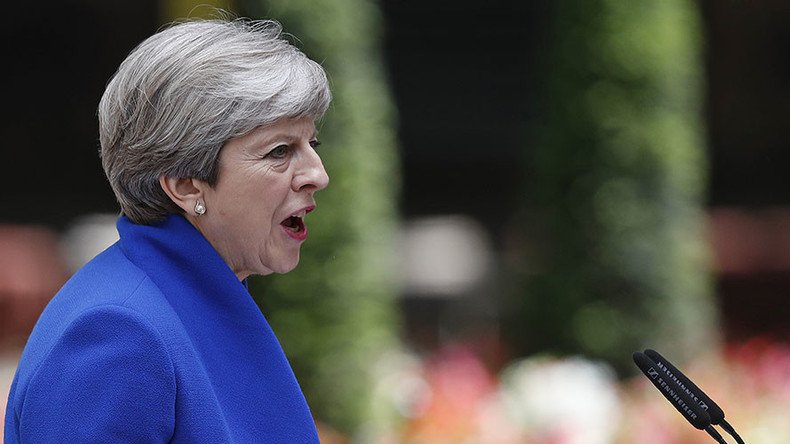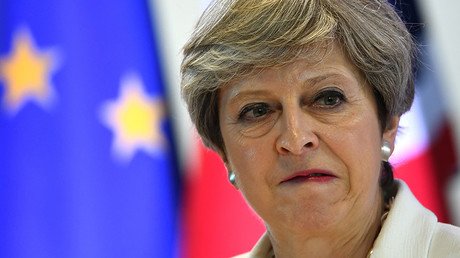Theresa May wants to remain PM until 2022… but desperately seeking Lib Dem help

Although Tory rebels reportedly want her gone by the summer of 2019, Prime Minister Theresa May says she wants to see out her full five-year term. However, she will have to court the favor of rival parties if her minority government is to survive.
Having already bought the support of the Democratic Unionist Party (DUP) by pledging an additional £1 billion in funding for Northern Ireland, May is now reportedly trying to win over the Liberal Democrats to get her legislation through the House of Commons.
Although the Lib Dems are vaguely to the left of May’s Tories, the two parties did manage to forge a coalition partnership between 2010 and 2015.
May’s chief of staff, Gavin Barwell, has reportedly been speaking to his Lib Dem counterpart, Ben Williams, as well as at least one other high-profile MP, seeking a deal that would shore up the Tories in Parliament.
However, now that the Lib Dems have committed to backing the softest possible Brexit, the parties may not make the most comfortable of bedfellows in the future. They also clash on the legalization of marijuana, easing austerity, and ending the one percent public sector pay cap.
Regardless of what deals she strikes to force her program through, opponents within May’s own party think she should stand down when Brexit negotiations conclude in March of 2019.
However, some warn that announcing a timeline for her departure now could portray her as a “lame duck” and, thus, weaken Britain’s hand in the two-year negotiating process that will decide the divorce terms for the UK’s exit from the EU.
Asked whether May intends to stay in her post until the end of the five year parliamentary term, her spokesman said: “I have been asked this before and I am sure I will be asked again, and the answer is ‘yes.’”
According to the Times, the Conservatives want to work with the Lib Dems to promote a series of common interests, including providing additional funding for the National Health Service (NHS), which would be achieved through increased taxation.
A Tory source said: “As we have been saying since the Queen’s Speech, we are happy to work across the House to drive forward the changes our country needs.”
A Lib Dem source said: “Gavin said that there were possibilities for joint working on areas of the Queen’s Speech. He mentioned mental health. Where we agree I imagine we’re open to discussion.
“Our manifesto suggests we need to raise tax to pay for the NHS and we’re clear we think there should be a cross-party funding agreement on the NHS.
“If Theresa May’s team want to reach out on a cross-party basis we are all ears."
However, a spokesman for the Lib Dems echoed outgoing leader Tim Farron, who said during the general election campaign that “there will be no coalitions, no pacts, no deals.”
Selling such a deal to the party’s members who are hostile to climbing back into bed with the Tories may prove difficult.
The Lib Dem press office, however, tweeted on Tuesday morning that the two parties had never talked about forging a deal.
This isn't true. They bumped into each other and made small talk. Nothing about working together or deals https://t.co/QOdOiW6T3q
— Lib Dem Press Office (@LibDemPress) 4 July 2017














